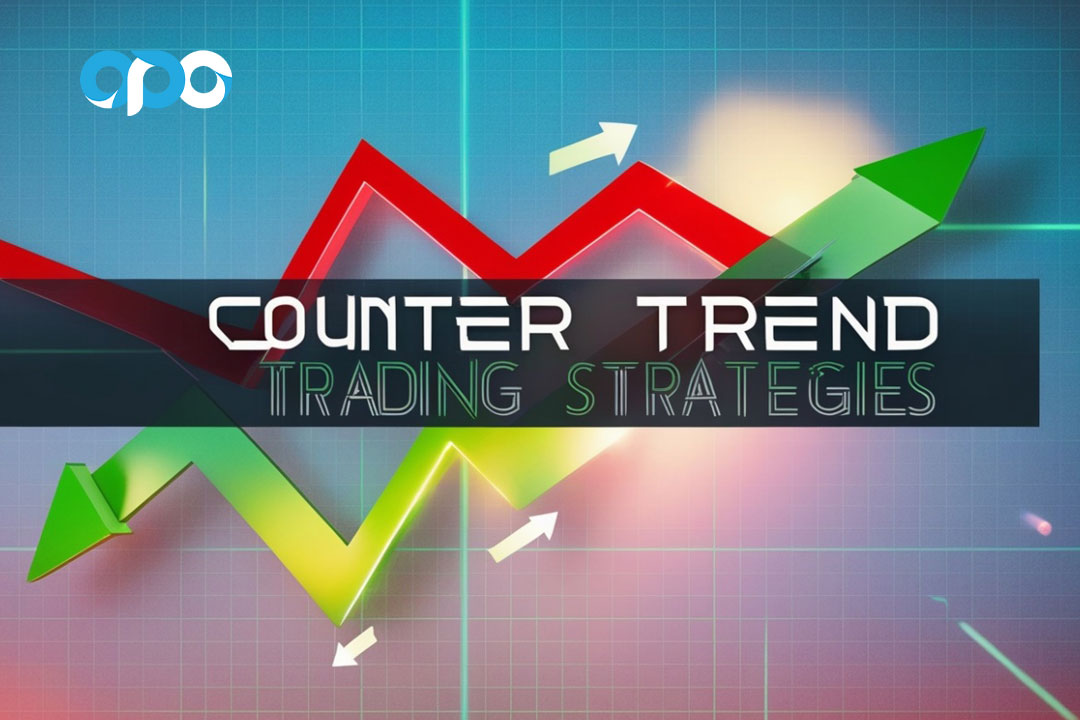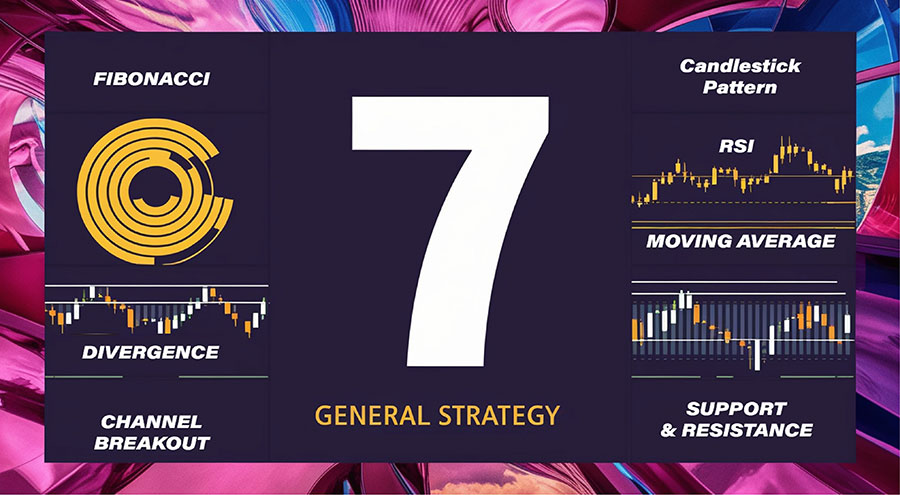In the dynamic world of financial markets, traders are always on the lookout for innovative strategies to gain a competitive edge. One such method that has garnered considerable attention is the counter trend trading strategy. This approach defies the conventional wisdom of “the trend is your friend” by focusing on identifying and seizing opportunities presented by potential trend reversals. By collaborating with a broker for forex trading, traders can effectively apply this strategy to navigate market movements and enhance their trading outcomes.

At its core, a counter trend trading strategy involves taking positions that go against the prevailing market trend, anticipating a temporary or permanent reversal. This method requires a keen understanding of market dynamics, technical analysis, and risk management. When executed correctly, counter trend trading can yield substantial profits by entering trades at optimal price points before major reversals occur.
In this comprehensive guide, we’ll explore the intricacies of counter trend trading, unveiling seven powerful strategies that can help you master this approach and potentially boost your trading success. Whether you’re a seasoned trader looking to diversify your techniques or a newcomer eager to learn, this article will provide valuable insights into the world of counter trend trading.
Understanding Counter Trend Trading
What is Counter Trend Trading?
Counter trend trading is a strategy that involves taking positions opposite to the prevailing market trend. Traders who employ this approach believe that all trends eventually pause, reverse, or end, and they aim to profit from these reversals. Unlike trend-following strategies that ride the momentum of existing trends, counter trend trading seeks to identify potential turning points in the market.

The Psychology Behind Counter Trend Trading
Counter trend trading requires a unique psychological mindset. It often means going against the crowd and having the confidence to take positions that may initially seem counterintuitive. Successful counter trend traders must:
- Remain calm under pressure
- Have strong conviction in their analysis
- Be patient in waiting for the right entry points
- Manage risk effectively to protect against prolonged adverse moves
Advantages of Counter Trend Trading
- Potential for higher returns: By entering trades near trend reversals, traders can potentially capture larger price movements.
- More frequent trading opportunities: Trends often experience temporary pullbacks, providing multiple entry points.
- Improved risk management: Entry points are often at support or resistance levels, allowing for tighter stop-loss placements.
- Diversification: Counter trend strategies can complement trend-following approaches in a balanced trading portfolio.
Read More: ICT Killzone Times
7 Powerful Counter Trend Trading Strategies

1. Fibonacci Retracement Strategy
The Fibonacci retracement tool is a popular technical indicator used in counter trend trading. It helps identify potential support and resistance levels where a trend might reverse.
Key points:
- Draw Fibonacci lines from a significant low to a high (or vice versa) in an established trend
- Look for reversals at key Fibonacci levels (23.6%, 38.2%, 50%, 61.8%)
- Combine with other technical indicators for confirmation
Example: In an uptrend, a trader might look to enter a long position when the price retraces to the 61.8% Fibonacci level and shows signs of bouncing back up.
2. Overbought/Oversold Oscillator Strategy
Oscillators like the Relative Strength Index (RSI) or Stochastic Oscillator can help identify when an asset is overbought or oversold, potentially signaling a trend reversal.
Key points:
- Watch for extreme readings (typically above 70 for overbought and below 30 for oversold)
- Look for divergences between the oscillator and price action
- Use in conjunction with support/resistance levels for better accuracy
Example: If the RSI shows an oversold reading below 30 in a downtrend, it might indicate a potential bullish reversal.
3. Moving Average Crossover Strategy
Moving averages can be powerful tools for identifying trend changes. A crossover between short-term and long-term moving averages can signal a potential reversal.
Key points:
- Use a combination of short-term (e.g., 10-day) and long-term (e.g., 50-day) moving averages
- Look for crossovers as potential entry signals
- Consider the overall market context and support/resistance levels
Example: When a shorter-term moving average crosses above a longer-term moving average, it might signal the beginning of an uptrend, providing a potential long entry point.
4. Divergence Trading Strategy
Divergence occurs when the price of an asset moves in the opposite direction of a technical indicator. This can be a powerful signal for potential trend reversals.
Key points:
- Look for divergences between price action and momentum indicators (e.g., RSI, MACD)
- Bullish divergence: Price makes lower lows, but the indicator makes higher lows
- Bearish divergence: Price makes higher highs, but the indicator makes lower highs
Example: If a stock’s price is making new highs, but the RSI is showing lower highs, this bearish divergence could signal a potential downward reversal.
5. Channel Breakout Strategy
Price channels represent areas where an asset’s price has been consistently trading. A breakout from these channels can signal a potential trend reversal.
Key points:
- Identify clear upper and lower boundaries of the price channel
- Look for strong breakouts beyond these boundaries
- Consider volume as a confirmation tool for breakouts
Example: If a stock has been trading in a descending channel and suddenly breaks above the upper boundary with high volume, it could indicate a bullish reversal.
6. Candlestick Pattern Recognition Strategy
Certain candlestick patterns can provide valuable insights into potential trend reversals. Recognizing these patterns can offer early entry points for counter trend trades.
Key patterns to watch:
- Hammer and Inverted Hammer
- Engulfing patterns (Bullish and Bearish)
- Doji
- Morning Star and Evening Star
Example: A bullish engulfing pattern forming at the bottom of a downtrend could signal a potential reversal to the upside.
7. Support and Resistance Level Strategy
Identifying key support and resistance levels is crucial for counter trend trading. These levels often act as turning points where trends may reverse.
Key points:
- Identify significant support and resistance levels using historical price action
- Look for reversal signals when price approaches these levels
- Combine with other technical indicators for confirmation
Example: If a stock in a downtrend approaches a strong support level and shows signs of buying pressure (e.g., a bullish candlestick pattern), it might present a good opportunity for a counter trend long trade.
Implementing Counter Trend Trading Strategies
Risk Management in Counter Trend Trading
Effective risk management is crucial in counter trend trading due to the potential for extended adverse moves. Here are some key risk management principles:
- Use tight stop-losses: Place stops just beyond key support/resistance levels
- Limit position sizes: Avoid overexposure to any single trade
- Use proper risk-reward ratios: Aim for at least 1:2 risk-reward on each trade
- Implement trailing stops: Lock in profits as the trade moves in your favor
Combining Multiple Strategies
For increased effectiveness, consider combining multiple counter trend strategies. For example:
- Use Fibonacci retracements to identify potential reversal zones
- Look for candlestick patterns at these levels for entry signals
- Confirm with oscillator readings (e.g., RSI oversold/overbought)
This multi-faceted approach can increase the probability of successful trades.
Read More: ICT Midnight Open Strategy
Backtesting and Optimization
Before implementing any counter trend strategy in live trading:
- Backtest the strategy using historical data
- Optimize parameters based on backtesting results
- Paper trade to validate the strategy in real-time market conditions
- Continuously monitor and adjust the strategy as market conditions change
Common Pitfalls in Counter Trend Trading

- Fighting strong trends: Avoid taking counter trend positions against very strong, established trends
- Overtrading: Don’t force trades; wait for clear setups that meet your criteria
- Ignoring fundamentals: While technical analysis is key, be aware of fundamental factors that could impact the asset
- Lack of patience: Counter trend setups may take time to develop; avoid premature entries
- Emotional trading: Stick to your strategy and avoid making impulsive decisions based on emotions
Certainly. I’ll add the new section and adjust the FAQs as requested. Here’s the additional content and revised FAQ section:
Who Should Consider Counter Trend Trading?
Counter trend trading, while potentially lucrative, is not suitable for all traders. This strategy is best suited for:

- Experienced Traders: Those who have a solid foundation in technical analysis and a deep understanding of market dynamics are better equipped to handle the challenges of counter trend trading.
- Risk-Tolerant Individuals: Counter trend trading often involves entering positions against strong market momentum, which can lead to increased volatility and potential losses if the trend doesn’t reverse as anticipated.
- Disciplined Traders: Success in counter trend trading requires strict adherence to entry and exit rules, as well as robust risk management practices.
- Quick Decision Makers: Markets can move rapidly, especially during trend reversals. Traders need to be able to analyze situations quickly and act decisively.
- Emotionally Stable Traders: Going against the prevailing trend can be psychologically challenging. Traders must remain calm and objective, even when the market initially moves against their position.
Considerations for Beginners
While counter trend trading can be exciting, it’s generally not recommended for novice traders. Beginners should:
- Focus on Understanding Trends: Before attempting to trade against trends, it’s crucial to develop a strong ability to identify and analyze trend direction and strength.
- Master Basic Technical Analysis: Proficiency in using key technical indicators and understanding chart patterns is essential before advancing to counter trend strategies.
- Practice with Demo Accounts: Use paper trading or demo accounts to test counter trend strategies without risking real capital.
- Develop Risk Management Skills: Learn to manage risk effectively, including proper position sizing and stop-loss placement.
- Gain Market Experience: Spend time observing how markets behave, particularly during trend reversals, to build intuition and pattern recognition skills.
- Start with Trend Following: Begin with simpler trend-following strategies to build confidence and experience before transitioning to more complex counter trend approaches.
As traders gain experience and confidence in their abilities to read market conditions and manage risk, they can gradually incorporate counter trend techniques into their trading arsenal. Remember, successful trading is a journey of continuous learning and adaptation.
Read More: End of Day Forex Trading Strategy
Conclusion
Counter trend trading offers a unique approach to capitalizing on market reversals and can be a valuable addition to any trader’s toolkit. By mastering the seven strategies outlined in this article – Fibonacci retracements, overbought/oversold oscillators, moving average crossovers, divergence trading, channel breakouts, candlestick pattern recognition, and support/resistance levels – traders can enhance their ability to identify and profit from trend reversals.
Remember that successful counter trend trading requires discipline, patience, and effective risk management. It’s essential to thoroughly backtest and practice these strategies before implementing them in live trading. As with any trading approach, continuous learning and adaptation are key to long-term success.
Whether you’re looking to diversify your trading strategies or seeking new ways to profit from market movements, counter trend trading offers exciting opportunities. By combining technical analysis, psychological preparedness, and robust risk management, you can potentially unlock new levels of trading success.
How does counter trend trading impact overall portfolio diversification?
Counter trend trading can significantly enhance portfolio diversification by providing a different return profile compared to traditional buy-and-hold or trend-following strategies. Since counter trend trades aim to profit from market reversals, they often perform well when other strategies struggle, particularly during periods of market volatility or trend changes. This negative correlation with trend-following strategies can help smooth overall portfolio returns. However, it’s important to balance counter trend positions with other trading approaches to maintain a well-rounded investment strategy.
What role does fundamental analysis play in counter trend trading?
While counter trend trading primarily relies on technical analysis, fundamental analysis can play a supportive role. Fundamental factors such as economic indicators, company earnings, or geopolitical events can often be catalysts for trend reversals. Savvy counter trend traders incorporate fundamental analysis to:
Validate potential reversal points identified through technical analysis
Gauge the strength and sustainability of a potential trend change
Identify upcoming events that could trigger reversals (e.g., central bank meetings, earnings releases)
Understand the broader market context in which price movements occur
By combining technical and fundamental analysis, counter trend traders can make more informed decisions and potentially improve their success rate.
How can machine learning and AI be leveraged in counter trend trading strategies?
Machine learning and artificial intelligence are increasingly being applied to counter trend trading strategies, offering several potential benefits:
Pattern Recognition: AI algorithms can analyze vast amounts of historical data to identify complex patterns that might signal potential trend reversals, often detecting subtle relationships that human traders might miss.
Real-time Data Processing: Machine learning models can process and analyze large volumes of real-time market data, potentially identifying reversal opportunities faster than human traders.
Sentiment Analysis: AI can be used to analyze social media, news articles, and other text-based sources to gauge market sentiment, which can be a leading indicator of trend changes.
Risk Management: Machine learning models can help optimize stop-loss levels and position sizes based on historical performance and current market conditions.
Strategy Optimization: AI can continuously back-test and refine trading strategies, adapting to changing market conditions more quickly than manual processes







